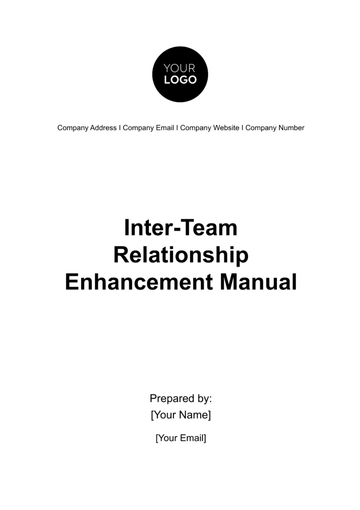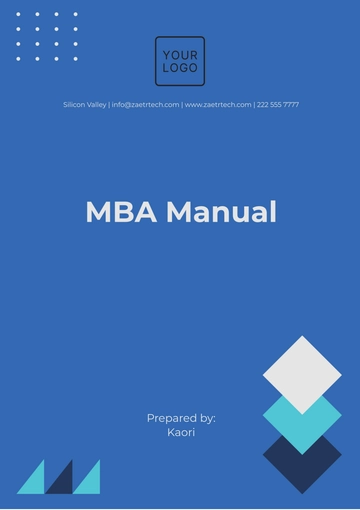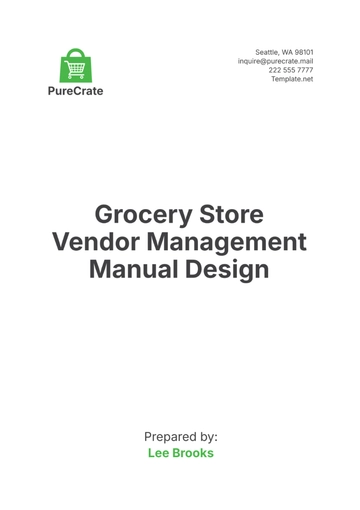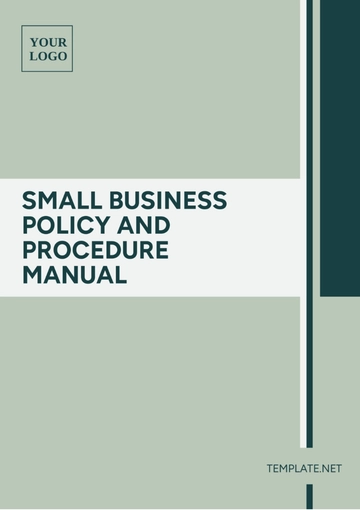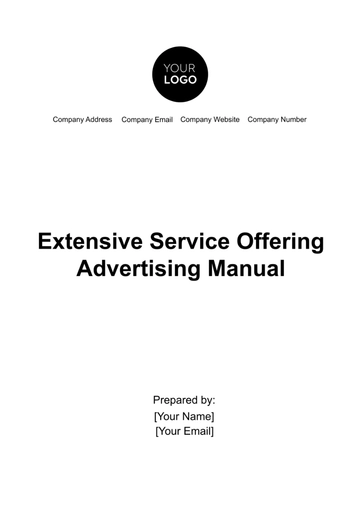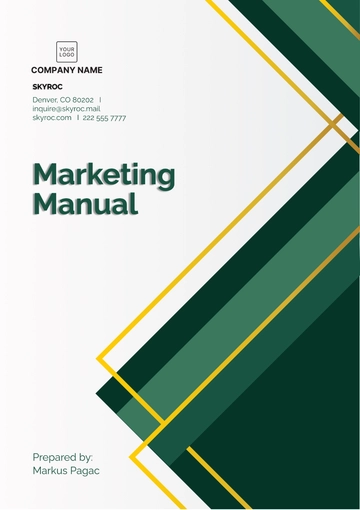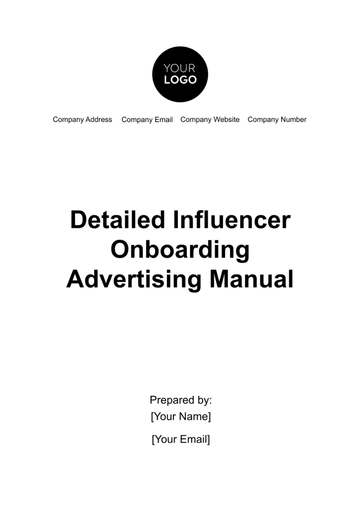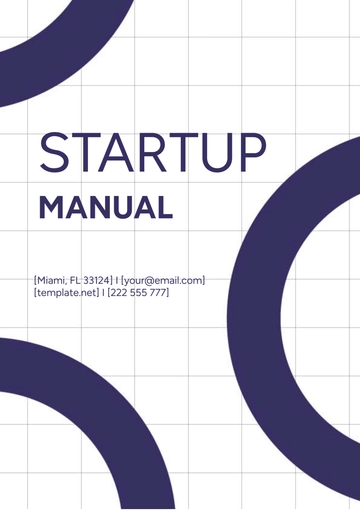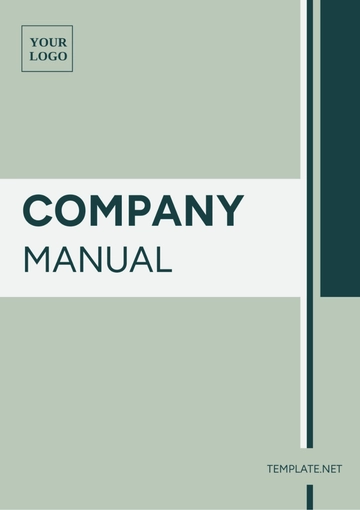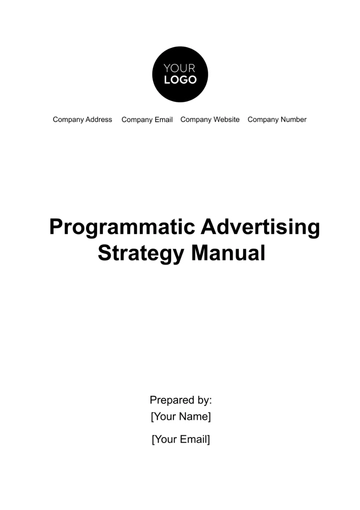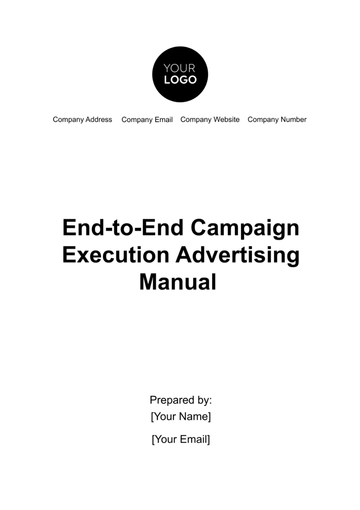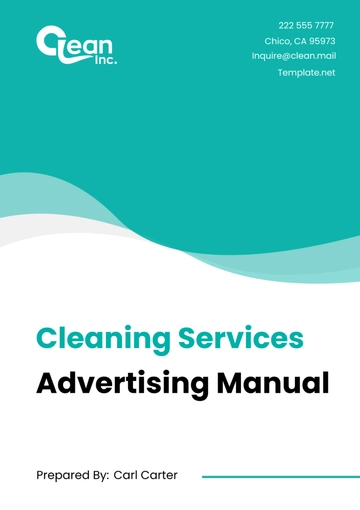Free Marketing Training Manual
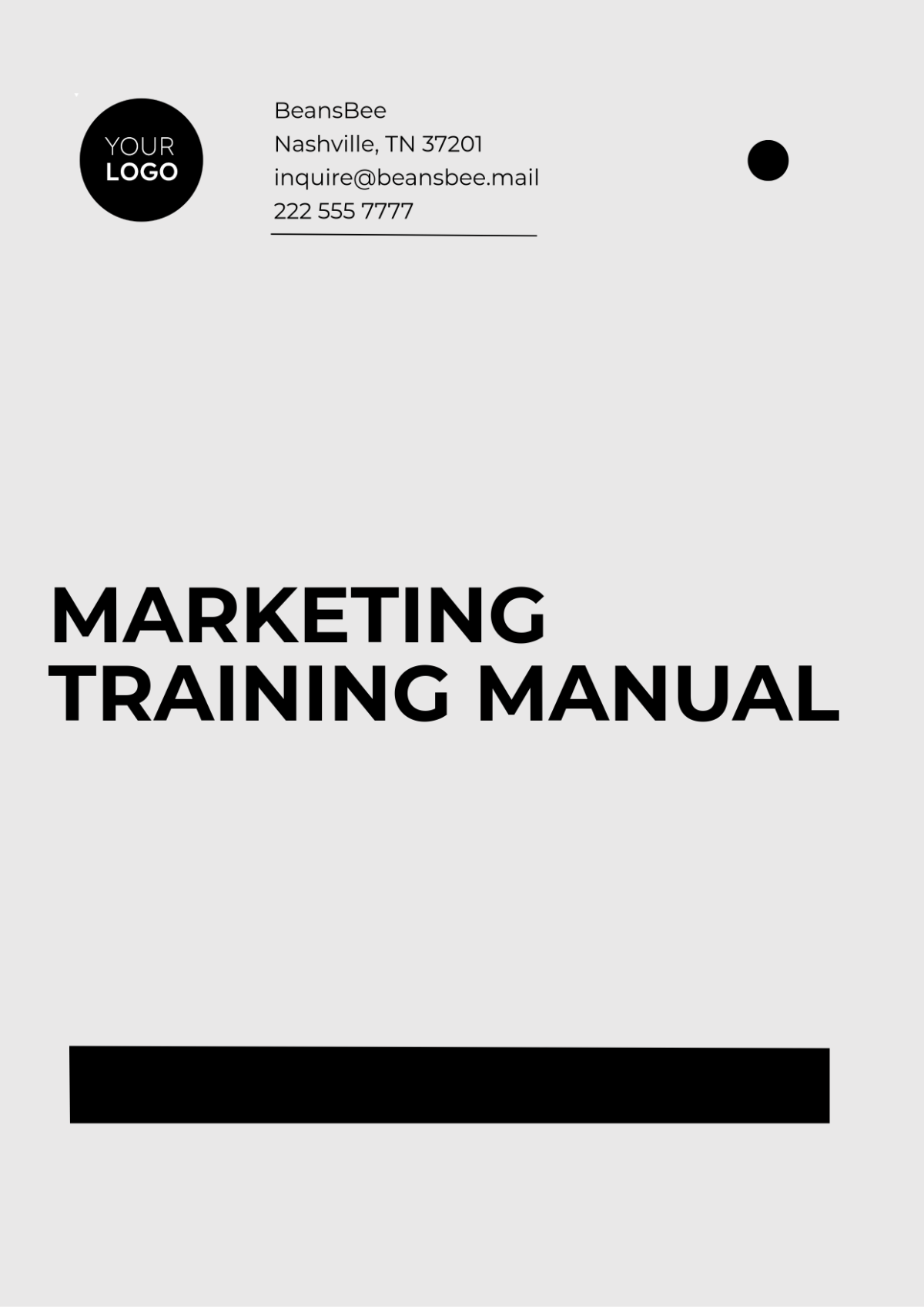
Prepared by: [Your Company Name]
Date: [Date]
I. Introduction
Welcome to the Marketing Training Manual for [Your Company Name]. This document serves as a comprehensive guide to our marketing processes, strategies, and tools, tailored for both new hires and current employees seeking to enhance their skills. In the dynamic field of marketing, staying informed and adaptable is crucial, and this manual aims to empower you with the knowledge needed to excel in your role.
A. Manual Objectives
Provide clear guidelines on marketing practices.
Offer insights into our company’s marketing strategies and culture.
Equip you with resources to effectively engage our target audience.
II. Company Overview
A. Mission Statement
At [Your Company Name], our mission is to deliver innovative technology solutions that empower our customers to achieve their goals. We strive to build long-lasting relationships based on trust, integrity, and exceptional service.
B. Company History
Founded in 2050 by [Your Name], [Your Company Name] started as a small business focused on software development. Over the years, we have evolved into a leading provider of cloud computing services and IT consulting, serving clients across North America and Europe.
C. Core Values
Integrity: We are committed to honest communication and ethical practices in all our dealings.
Innovation: We encourage creative thinking and embrace new technologies to stay ahead in the market.
Customer Focus: Our customers are our priority. We actively seek feedback and adapt our offerings to meet their needs.
III. Marketing Strategies
Our marketing strategies are designed to align with our business goals and effectively reach our audience.
A. Key Marketing Strategies
Content Marketing: We create informative and engaging content that addresses our audience's pain points and interests. This includes blog posts, eBooks, videos, and infographics.
Example: A monthly webinar series cover
Social Media Marketing: We utilize platforms like Facebook, LinkedIn, Instagram, and Twitter to engage with customers, share content, and promote our products/services.
Example: Running a weekly Q&A session on LinkedIn to interact with our audience and address their questions in real time.
Email Marketing: We send targeted email campaigns to nurture leads and maintain relationships with existing customers.
Example: A bi-weekly newsletter highlighting product updates, industry news, and customer success stories.
B. Integrated Marketing Approach
Our marketing efforts are integrated across various channels to ensure consistent messaging and a unified brand experience. We encourage collaboration between departments to create cohesive campaigns.
IV. Target Audience
Understanding our target audience is essential for effective marketing. We segment our audience based on demographics, psychographics, and behavioral characteristics.
A. Customer Segments
Customer Segment | Description |
|---|---|
Segment A: Small Business Owners | Typically aged 30-50, these individuals are looking for cost-effective solutions to enhance their operations. They value reliability and customer support. |
Segment B: Corporate Executives | Aged 40-60, these decision-makers seek premium services and products that can drive efficiency and ROI in their organizations. |
Segment C: Tech-Savvy Millennials | Aged 25-40, this group prioritizes convenience, digital engagement, and sustainable practices. They are often influenced by social media and peer reviews. |
B. Research Methods
Surveys and Feedback Forms: Conduct regular surveys to gather insights about customer preferences and experiences.
Social Media Analytics: Utilize tools like Hootsuite or Buffer to track audience engagement and preferences on social platforms.
Market Research Reports: Leverage industry reports to understand market trends and customer behavior.
V. Tools and Resources
We leverage various tools to enhance our marketing efficiency and effectiveness. Below are key resources available to our team:
Customer Relationship Management (CRM):
Tool: Salesforce
Purpose: To manage customer interactions, track sales, and analyze customer data for better decision-making.
Email Marketing Software:
Tool: Mailchimp
Purpose: For designing, sending, and analyzing email campaigns. Use A/B testing to determine which subject lines and content resonate best.
Social Media Management:
Tool: Sprout Social
Purpose: To schedule posts, monitor engagement, and analyze the performance of social media campaigns.
Analytics Tools:
Tool: Google Analytics
Purpose: To measure website traffic, user behavior, and the effectiveness of marketing campaigns.
A. Resource Library
Access a shared resource library on [Company Intranet/Google Drive] for templates, branding guidelines, and previous campaign reports.
VI. Campaign Management
Effective campaign management is crucial for achieving our marketing objectives. Follow these structured steps for successful execution:
A. Planning
Define Campaign Objectives: Use SMART criteria (Specific, Measurable, Achievable, Relevant, Time-bound) to outline clear goals.
Example: Increase lead generation by 20% over the next quarter.
Identify Target Audience Segments: Use research to determine which customer segments to focus on for each campaign.
Establish Budget and Timeline: Allocate resources and set deadlines to ensure timely delivery.
B. Execution
Create Engaging Content and Visuals: Collaborate with graphic designers and content creators to develop compelling materials.
Use Chosen Tools to Launch the Campaign: Schedule social media posts, send emails, and deploy ads using the respective platforms.
C. Monitoring
Track Performance Metrics and Engagement Rates: Use analytics tools to monitor key metrics in real-time.
Adjust Strategies as Needed Based on Real-Time Data: Be flexible and ready to pivot strategies if certain elements of the campaign are underperforming.
VII. Best Practices
To maximize the effectiveness of our marketing efforts, adhere to these best practices:
Stay Updated: Subscribe to industry newsletters and attend webinars to keep up with the latest marketing trends and tools.
Collaborate: Foster a team-oriented culture. Regular brainstorming sessions can lead to innovative ideas and improved campaign performance.
Test and Optimize: Implement A/B testing on various aspects of your campaigns (e.g., subject lines, ad copy) to identify what works best.
Document Everything: Maintain thorough documentation of campaigns, including what strategies were used, what worked, and what didn’t, to inform future efforts.
VIII. Evaluation and Measurement
Regular evaluation of marketing efforts is crucial for understanding success and identifying areas for improvement.
A. Key Performance Indicators (KPIs)
Conversion Rate: The percentage of leads that take the desired action (e.g., making a purchase).
Return on Investment (ROI): A measure of the profitability of campaigns calculated as (Net Profit / Cost of Investment) x 100.
Customer Acquisition Cost (CAC): The total cost of acquiring a new customer, calculated by dividing total marketing expenses by the number of new customers acquired.
B. Tools for Measurement
Google Analytics: To track website performance and user engagement.
Social Media Analytics Tool: Use platforms like Facebook Insights or Twitter Analytics to measure engagement rates and reach.
Email Marketing Analytics: Review open rates, click-through rates, and conversion rates from email campaigns.
IX. Glossary
CRM (Customer Relationship Management): A system for managing a company's interactions with current and potential customers, streamlining processes, and improving profitability.
KPI (Key Performance Indicator): A measurable value that demonstrates how effectively a company is achieving key business objectives.
ROI (Return on Investment): A performance measure used to evaluate the efficiency of an investment.
A/B Testing: A method of comparing two versions of a web page, email, or ad to determine which one performs better.
Lead Generation: The process of attracting and converting prospects into someone who has indicated interest in your company's product or service.
- 100% Customizable, free editor
- Access 1 Million+ Templates, photo’s & graphics
- Download or share as a template
- Click and replace photos, graphics, text, backgrounds
- Resize, crop, AI write & more
- Access advanced editor
Unlock your marketing potential with our Marketing Training Manual Template from Template.net. Crafted with industry-relevant keywords, this editable and customizable template ensures seamless integration into your strategy. Utilize our AI Editor Tool for effortless customization, empowering professionals to streamline their marketing efforts with precision and efficiency.
